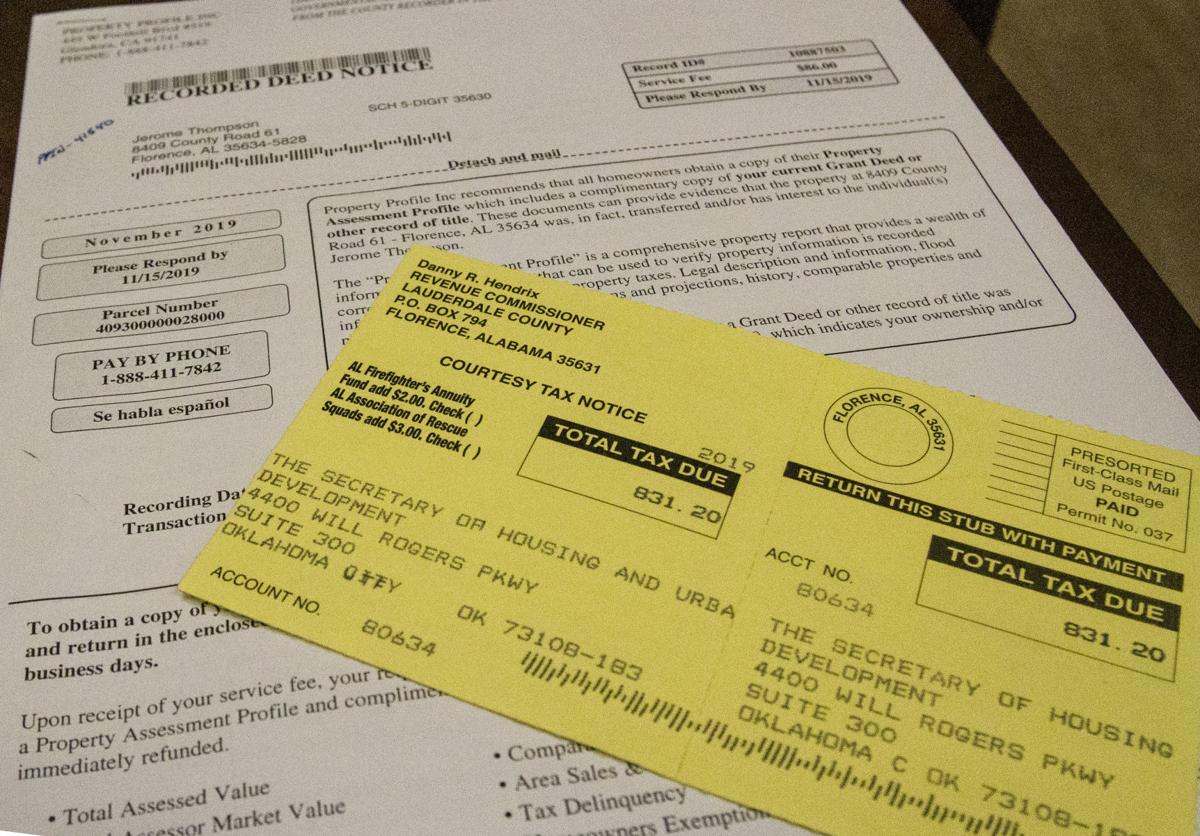Home>Home Maintenance>What Is Meant By “CFL” In Town Property Assessment


Home Maintenance
What Is Meant By “CFL” In Town Property Assessment
Modified: March 6, 2024
Learn about CFL in town property assessment and its significance for home maintenance. Discover how this assessment impacts property values and taxation.
(Many of the links in this article redirect to a specific reviewed product. Your purchase of these products through affiliate links helps to generate commission for Storables.com, at no extra cost. Learn more)
Introduction
Welcome to the world of town property assessment! If you’re a homeowner or someone interested in understanding how property values are determined, you’ve come to the right place. One important aspect of town property assessment is the concept of CFL. In this article, we’ll delve into what CFL means and its significance in determining property values.
Property assessment is the process of evaluating the value of a property for tax purposes. It helps local governments determine how much property taxes homeowners should pay based on the assessed value of their properties. While there are various factors involved in property assessment, CFL plays a crucial role in this process.
So, what exactly is CFL? CFL stands for “Comparative Factor Listing.” It is a method used by town assessors to compare different factors that influence property values. By considering these factors, assessors can accurately determine the assessed value of a property.
The importance of CFL in town property assessment cannot be overstated. It allows assessors to take into account specific factors that can affect property values, such as location, size, condition, and amenities. These factors are crucial in determining the fair market value of a property, which forms the basis for property taxes.
Let’s take a deeper look at the factors considered in CFL. They include:
- Location: Location is a key factor in determining property values. Properties located in desirable neighborhoods with good schools, amenities, and access to transportation tend to have higher values.
- Size: The size of a property, including the land and the building itself, plays a significant role in determining its value. Larger properties typically have higher assessed values.
- Condition: The condition of a property, including its age and maintenance, can impact its value. Well-maintained properties in good condition tend to have higher values.
- Amenities: Properties with additional features such as swimming pools, garages, or updated kitchens and bathrooms may have higher values compared to similar properties without these amenities.
- Market Trends: Town assessors also consider market trends when assessing property values. They analyze recent sales data and market conditions to ensure accurate assessments.
Assessors use these factors to assign a weight or importance to each factor in the CFL. The weight assigned to each factor can vary depending on the town and the specific property being assessed.
Now that we have a basic understanding of the factors considered in CFL, let’s explore how assessors calculate the CFL and its limitations and criticisms.
Key Takeaways:
- CFL, or Comparative Factor Listing, is a method used by town assessors to compare factors like location, size, condition, and amenities when determining property values for fair taxation.
- While CFL helps assessors make fair property assessments, it has limitations like subjectivity and market fluctuations. Assessors are continually improving methods to ensure accurate and equitable property valuations.
Read more: What Is Property Assessment
Understanding Town Property Assessment
Town property assessment is a systematic process used by local governments to determine the value of properties within their jurisdiction. The assessed value is then used to calculate property taxes, which homeowners are obligated to pay to the municipality.
The primary goal of town property assessment is to ensure fairness and accuracy in determining property values. Assessments are conducted periodically to account for changes in market conditions and property values. This helps to maintain equity among homeowners and distribute the tax burden fairly.
Assessments are carried out by trained assessors who evaluate various factors that contribute to a property’s value. These factors include the property’s location, size, condition, and amenities. Assessors rely on both objective data, such as recent sales data and property appraisals, as well as subjective factors unique to each property.
Once the assessors have gathered all relevant information, they use a variety of methods and tools to calculate the assessed value of a property. One important tool in their arsenal is the Comparative Factor Listing (CFL) method.
The CFL method allows assessors to compare properties that have similar characteristics and attributes. By analyzing these comparable properties and considering the factors mentioned earlier, assessors determine the relative importance or weight of each factor in the overall assessment.
It is important to note that the assessed value determined through this process may not necessarily be the same as the market value or the price that a property would sell for on the open market. The assessed value is used solely for taxation purposes and may be subject to certain statutory caps or adjustments set by the local government.
To ensure transparency and accuracy, many jurisdictions provide avenues for property owners to appeal their assessments if they believe it does not accurately reflect the true value of their property. This allows homeowners to present evidence and provide a case for reassessment, leading to fairer and more precise property valuations.
Understanding town property assessment is crucial for homeowners as it directly impacts the amount of property taxes they are required to pay. By knowing the factors assessed and the methods used, homeowners can make informed decisions about their properties and ensure they are being treated fairly in the tax assessment process.
Now that we have a solid understanding of town property assessment, let’s take a closer look at the concept of CFL and its role in this assessment process.
What is CFL?
In the world of town property assessment, CFL stands for Comparative Factor Listing. It is a method used by town assessors to compare various factors that influence property values. By considering these factors and their relative importance, assessors can determine the assessed value of a property with more accuracy and fairness.
The CFL method involves the identification and analysis of comparable properties. These properties share similar characteristics and attributes, such as location, size, condition, and amenities. By comparing these properties, assessors can gain insights into the factors that contribute to property values within a specific area.
Comparative listings are often created based on recent sales data or appraisals of similar properties. These listings help assessors determine the market trends and values of various factors when calculating the assessed value of a property.
For example, let’s say an assessor is evaluating a residential property. They would review comparable properties in the same neighborhood that have recently been sold. By analyzing the sales data and considering factors such as the size of the property, the number of bedrooms and bathrooms, the condition of the property, and any additional amenities, the assessor can determine the impact these factors have on property values.
The CFL method allows assessors to assign weights or importance to each factor based on their analysis of comparable properties. These weights reflect the influence that each factor has on the assessed value of a property. The weights assigned to each factor can vary depending on the town and the specific property being assessed.
Once the assessors have determined the weights for each factor, they apply these weights to the specific property being assessed. By multiplying the value of each factor by its respective weight, assessors arrive at the CFL value. This CFL value is then used along with other assessment methods to calculate the final assessed value of the property.
The CFL method is an essential tool in town property assessment as it allows assessors to consider the specific factors that contribute to the value of a property. By using comparable properties as a reference point, assessors can ensure that their assessments are based on actual market conditions and provide a fair and accurate value for each property.
Now that we have a clear understanding of what CFL is and how it works, let’s explore the importance of CFL in town property assessment.
Importance of CFL in Town Property Assessment
The Comparative Factor Listing (CFL) method plays a crucial role in town property assessment. It allows assessors to accurately determine the assessed value of a property by considering specific factors that influence property values. Here are some key reasons why CFL is important in town property assessment:
1. Accuracy: CFL helps assessors factor in the various elements that contribute to the value of a property. By comparing comparable properties and analyzing factors such as location, size, condition, and amenities, assessors can arrive at a more accurate assessed value. This ensures that property owners are paying their fair share of property taxes.
2. Fairness: Town property assessment aims to distribute the tax burden fairly among property owners. CFL ensures that similar properties in the same area are assessed using a consistent and equitable approach. By considering the same factors and assigning weights based on market trends, assessors can avoid any bias in the assessment process.
3. Transparency: The CFL method provides transparency in how property values are determined. By using comparable properties as a reference point, assessors can explain to property owners how their assessments were calculated. This helps build trust and confidence in the assessment process.
4. Reflecting Market Conditions: CFL takes into account market trends and recent sales data when assessing property values. By analyzing the market and considering the impact of factors on recent property transactions, assessors ensure that assessments accurately reflect current market conditions. This helps maintain consistency and adapt to changes in property values over time.
5. Consistency: CFL provides a standardized approach to property assessment. By considering the same factors and assigning weights based on market conditions, assessors can ensure consistency in the assessment process. This consistency helps ensure that similar properties are assessed in a similar manner, promoting fairness and equity.
6. Appeals Process: CFL allows property owners to have a clear understanding of how their assessments were calculated. If a property owner believes their assessment is inaccurate, they can appeal the assessment and provide evidence to support their claim. The transparency provided by CFL allows for a fair and efficient appeals process.
Overall, the CFL method is essential in town property assessment as it brings accuracy, fairness, transparency, consistency, and adaptability to the assessment process. By considering specific factors and using comparable properties as a reference, assessors can determine the assessed value of properties in a way that reflects market conditions and ensures equitable taxation.
Now that we understand the importance of CFL, let’s explore the factors that are considered within the CFL method.
CFL stands for “Compact Fluorescent Lamp” in town property assessment. It refers to energy-efficient light bulbs that can help reduce electricity costs and environmental impact.
Factors Considered in CFL
When using the Comparative Factor Listing (CFL) method in town property assessment, assessors consider a range of factors that influence property values. These factors help assessors determine the assessed value of a property more accurately. Here are some key factors commonly considered in the CFL method:
1. Location: The location of a property plays a significant role in its value. Factors such as proximity to amenities, schools, transportation, and the desirability of the neighborhood can impact property values. Assessors analyze the location of a property and compare it to similar properties in the area.
2. Size: The size of a property, including the land and the structure itself, is an important factor in determining its value. Assessors consider the square footage of the property and compare it to comparable properties in terms of size and usable space.
3. Condition: The condition of a property is a crucial factor in its value. Assessors evaluate the overall state of the property, including the age, maintenance, and any repairs or renovations that may have been done. Well-maintained properties generally have higher values than those in disrepair.
4. Amenities: Assessors consider any additional features or amenities that a property may have. This can include things like swimming pools, garages, updated kitchens or bathrooms, or energy-efficient features. The presence of these amenities can positively impact the assessed value of a property.
5. Market Trends: Assessors analyze the current market conditions and recent sales data to identify trends that may influence property values. They consider factors such as supply and demand, changes in interest rates, and any economic factors that may impact the local real estate market.
6. Unique Characteristics: Assessors also take into account any unique characteristics of a property that may contribute to its value. This can include things like waterfront or mountain views, historical significance, or architectural features that set the property apart from others in the area.
It’s important to note that the specific factors considered in the CFL method may vary depending on the town and the jurisdiction’s assessment guidelines. Assessors may also assign different weights or importance to each factor, reflecting local market conditions and the preferences of the community.
By considering these factors within the CFL method, assessors can determine the relative impact of each factor on the assessed value of a property. This helps ensure that property assessments are accurate, fair, and reflective of the specific attributes that contribute to its value.
Now that we have a clear understanding of the factors considered in the CFL method, let’s explore how assessors calculate the CFL value.
Read more: What Is A Personal Property Assessment
Calculation of CFL
When using the Comparative Factor Listing (CFL) method in town property assessment, assessors follow a systematic approach to calculate the CFL value. This value represents the relative importance or weight of each factor in determining the assessed value of a property. Here’s a step-by-step breakdown of the calculation process:
1. Identification of Comparable Properties: Assessors start by identifying comparable properties that share similar characteristics and attributes with the property being assessed. These properties should be in the same neighborhood or area and have recently been sold or appraised.
2. Analysis of Comparable Properties: Assessors analyze several factors of the comparable properties, such as location, size, condition, and amenities. They examine these factors to determine their impact on property values and identify trends within the local real estate market.
3. Assigning Weights to Factors: Based on the analysis of the comparable properties, assessors assign weights to each factor. These weights represent the relative importance of each factor in the overall assessment. Factors that have a greater influence on property values may be assigned higher weights.
4. Evaluating the Property Being Assessed: Assessors apply the assigned weights to the specific property being assessed. They evaluate the property based on the same factors analyzed in the comparable properties and calculate a score for each factor.
5. Multiplying Factors by Weights: Assessors multiply the score of each factor by its respective weight. This step allows them to quantify the impact of each factor on the assessed value of the property. The products from each multiplication are added together to obtain the CFL value.
6. Incorporating CFL in the Assessment: The CFL value is one of the factors considered in the overall assessment of the property. It is combined with other assessment methods, such as income approach or cost approach, to calculate the final assessed value.
It’s important to note that the specific formulas and calculations used in CFL may vary depending on the jurisdiction and assessment guidelines. The weights assigned to each factor are not fixed and can be adjusted based on market conditions and the unique characteristics of the community being assessed.
By using the CFL method to calculate the relative importance of each factor, assessors can ensure a more accurate and informed assessment of property values. This approach takes into account specific market conditions and the characteristics of comparable properties to determine the assessed value with greater precision.
Now that we understand how assessors calculate the CFL value, let’s explore some limitations and criticisms of the CFL method.
Limitations and Criticisms of CFL
While the Comparative Factor Listing (CFL) method is widely used in town property assessment, it is important to acknowledge its limitations and criticisms. Here are some commonly cited concerns:
1. Subjectivity: Assigning weights to factors in CFL involves a certain degree of subjectivity. Different assessors may have varying opinions on the importance of certain factors, leading to potential inconsistencies in assessments. This subjectivity can also make the method susceptible to bias or personal preferences.
2. Lack of Precision: CFL relies on the analysis of comparable properties to determine the relative importance of factors. However, finding truly comparable properties can be challenging, especially in unique or niche markets. The lack of precise comparables may result in less accurate assessments.
3. Failure to Capture Individual Property Features: CFL focuses on broad factors like location, size, and condition, but it may not fully capture the unique features and characteristics of individual properties. Properties with distinct attributes or amenities that set them apart from others in the market may not be accurately reflected in the assessment using the CFL method.
4. Limited Scope: CFL primarily considers factors that can be easily quantified, such as property size or number of rooms. It may overlook other intangible aspects that can impact property values, such as the quality of the neighborhood or the reputation of nearby schools.
5. Market Fluctuations: CFL relies on recent sales data and market trends. However, real estate markets can be volatile, and assessments that heavily rely on current market conditions may not accurately reflect long-term property values. Rapid changes in property values can lead to assessments that are either too high or too low.
6. Inadequate Consideration for Income Potential: CFL may not adequately account for the income potential of a property, particularly in commercial or income-generating properties. Assessing income potential can be complex and subjective, which may result in assessments that do not accurately reflect the market value of the property.
It is important to note that while CFL has its limitations, it is often used in conjunction with other assessment methods to ensure a more comprehensive and accurate valuation of properties.
To address these limitations and criticisms, assessors continually refine and update their assessment methodologies. They may incorporate additional data sources, employ advanced statistical models, or consult industry experts to enhance the accuracy and fairness of property assessments.
By being aware of the limitations and criticisms of the CFL method, property owners and assessors can work together to continually improve the town property assessment process and strive for more accurate and equitable property valuations.
Now that we have explored the limitations and criticisms of CFL, let’s conclude our discussion on town property assessment.
Conclusion
In conclusion, town property assessment is a vital process that determines the assessed value of properties for taxation purposes. Within this process, the Comparative Factor Listing (CFL) method plays a crucial role in accurately assessing property values.
CFL allows assessors to consider specific factors such as location, size, condition, amenities, and market trends when evaluating properties. By comparing these factors among comparable properties, assessors can assign weights or importance to each factor, resulting in a more accurate and fair assessment.
However, the CFL method is not without limitations and criticisms. The subjective nature of assigning weights, potential lack of precise comparables, and the inability to capture unique property features are challenges that assessors must navigate. Market fluctuations and the limited scope of CFL also affect its accuracy.
Despite these limitations, assessors are continuously improving their methodologies to enhance the accuracy and fairness of property assessments. They may incorporate additional data sources, employ advanced statistical models, and consider income potential to address these concerns.
Understanding town property assessment and the significance of CFL is crucial for homeowners and property owners. It allows them to comprehend how property values are determined and ensures that they are being taxed fairly.
In the end, the goal of town property assessment is to distribute the tax burden equitably among property owners, maintain transparency and consistency in assessing property values, and reflect current market conditions. By employing the CFL method alongside other assessment approaches, assessors strive to achieve these objectives.
As property values continue to evolve and market dynamics change, assessors will adapt their methodologies to ensure accurate and fair assessments. Property owners also play a vital role by providing feedback, appealing assessments when necessary, and participating in the ongoing dialogue to improve the property assessment process.
By understanding the intricate process of town property assessment and the role of CFL, property owners can have confidence in the integrity and fairness of their property assessments.
Frequently Asked Questions about What Is Meant By "CFL" In Town Property Assessment
Was this page helpful?
At Storables.com, we guarantee accurate and reliable information. Our content, validated by Expert Board Contributors, is crafted following stringent Editorial Policies. We're committed to providing you with well-researched, expert-backed insights for all your informational needs.















0 thoughts on “What Is Meant By “CFL” In Town Property Assessment”